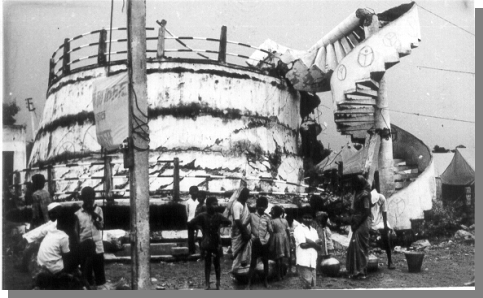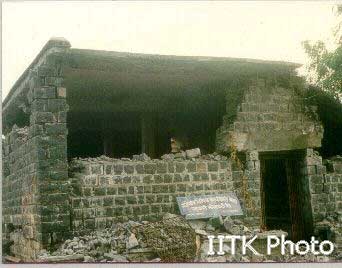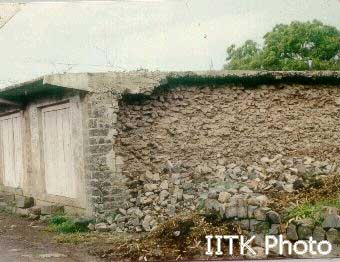The Gujarat earthquake of January 26, 2001 generated intense shaking which was felt by about 70 % people of India. intense shaking brought out changes in the ocean and land surface and subsurface. At numerous places, emergence of water on the earth's surface brought hope among people about the future availability of drinking water in Gujarat. preliminary laboratory analysis of water samples collected in the epicentral area show high Chloride concentration and salt content which ruled out any hope of the potable water. Figure 2 shows the view of the earth surface near shows crater like structure, which is common in volcanic area as a result of liquefaction.the surface from where the water has come out as a fountain up to about five feet high which was seen by local people and the water was continued for about two hours. Near to these craters, long cracks up to about 50 cm wide running about 500 meter long

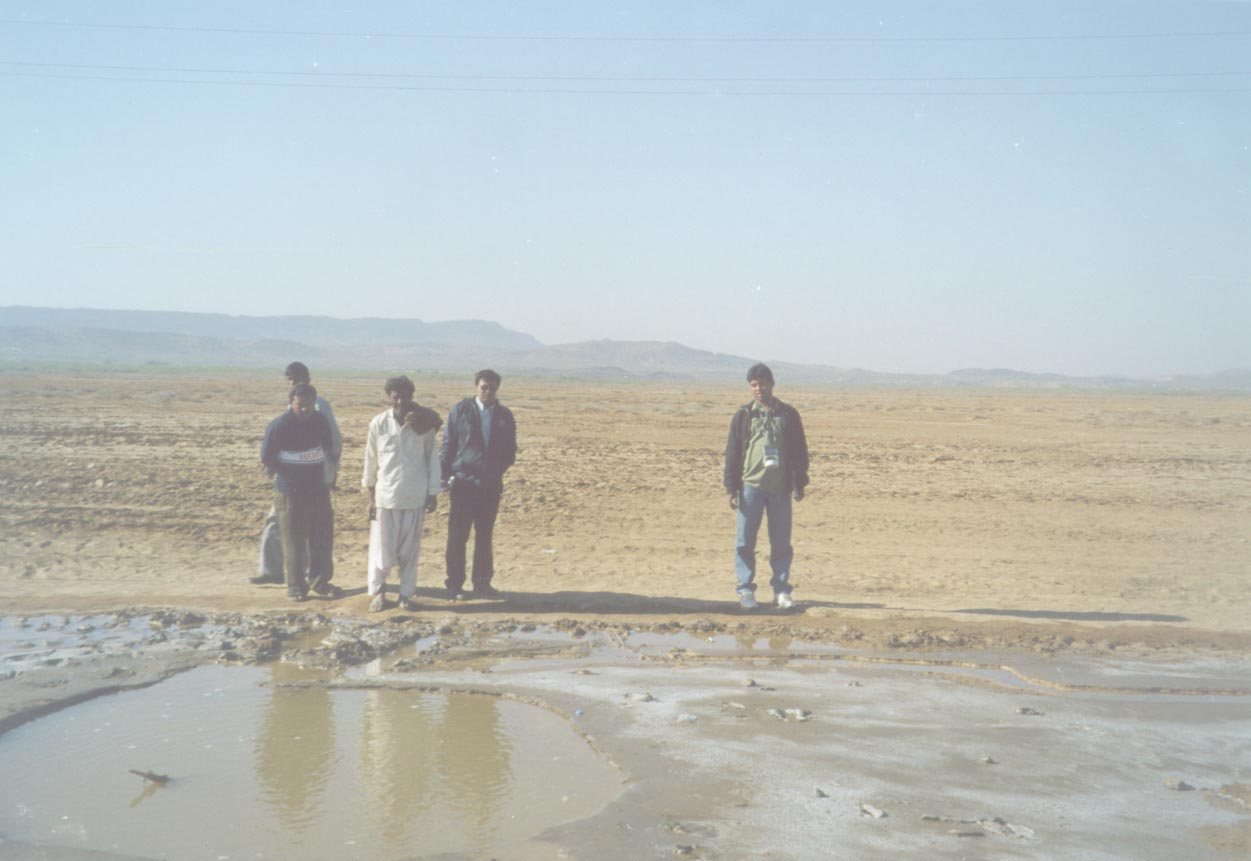
Gujarat Earthquake of January 26, 2001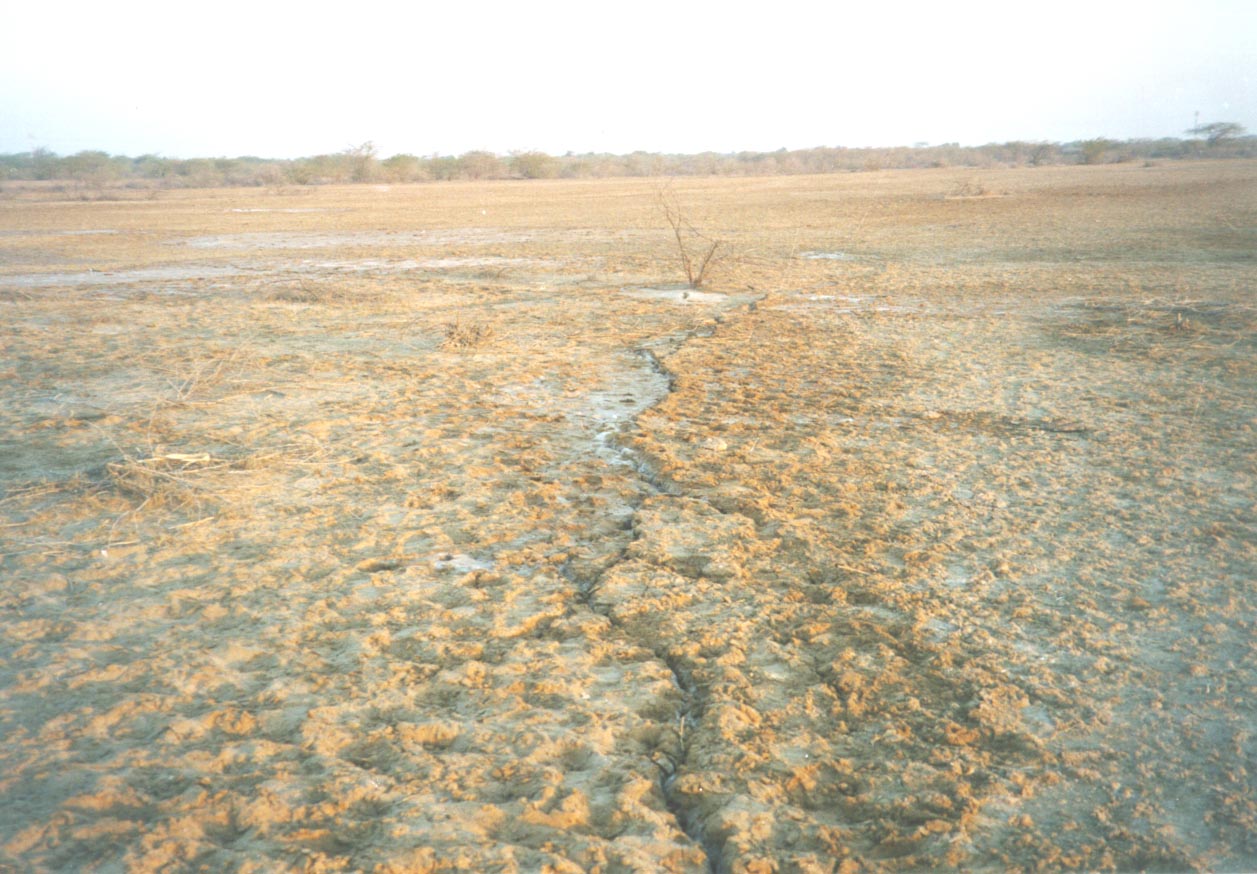
real pic of Gujarat Earthquake of January 26, 2001
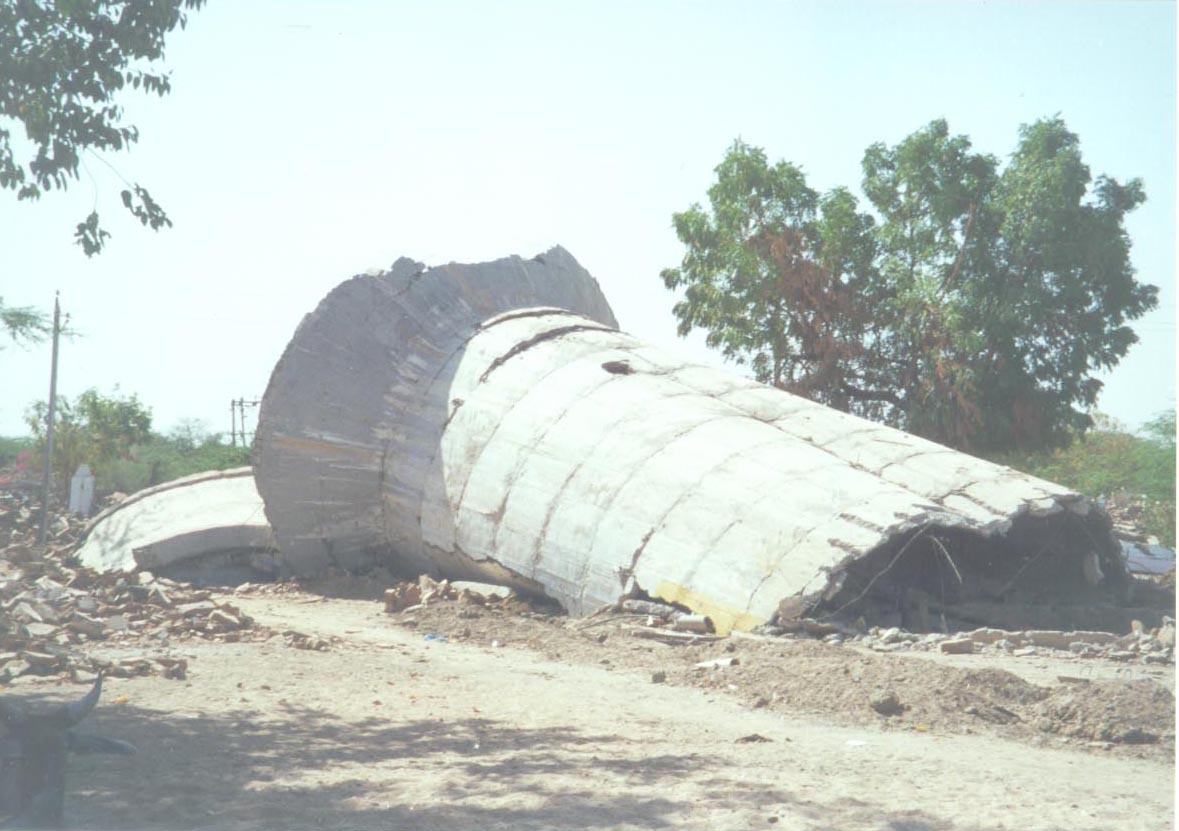
Gujarat Earthquake of January 26, 2001



Gujarat Earthquake of January 26, 2001

real pic of Gujarat Earthquake of January 26, 2001

Gujarat Earthquake of January 26, 2001

